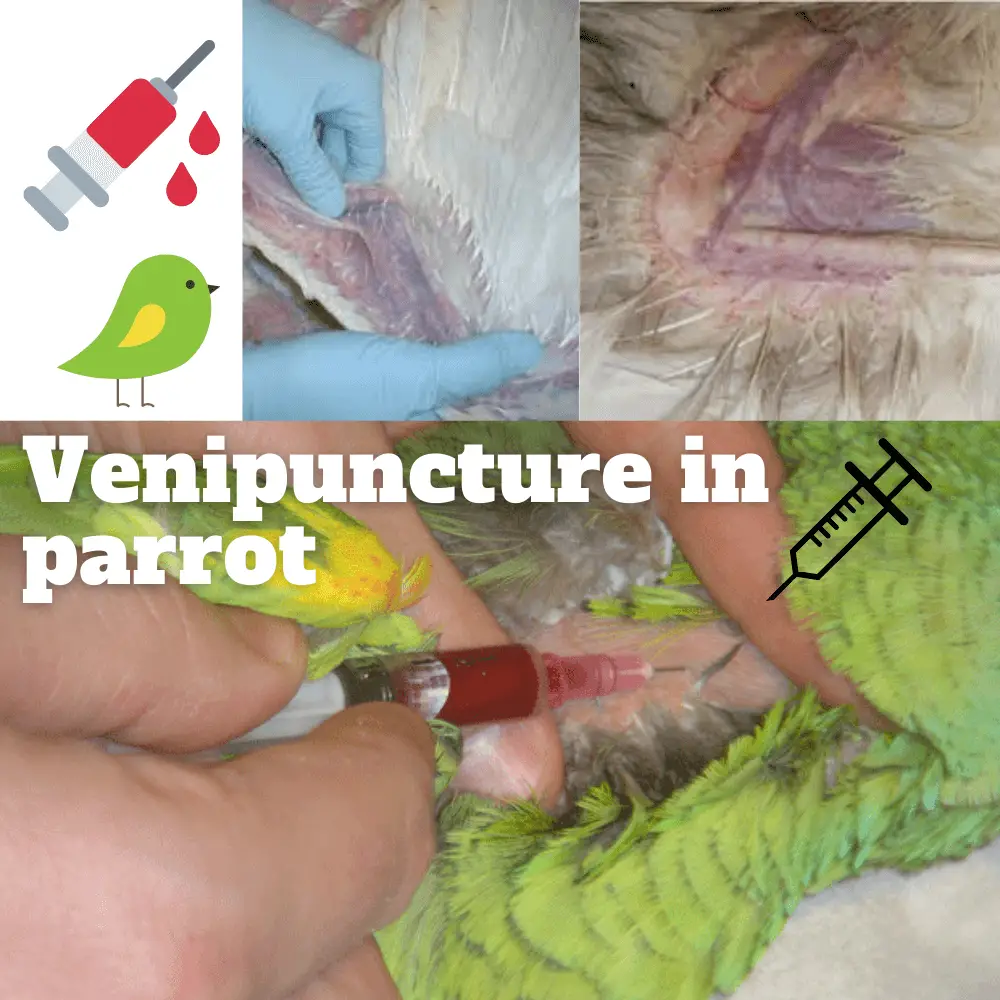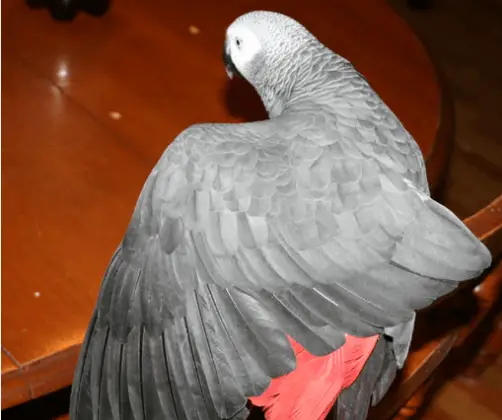
Venipuncture in parrot: When acquiring a new parrot, it is recommended to have your bird tested for certain viruses or diseases or at least, to do a basic blood test ( hematology and biochemistry ).
To do this, your vet will need to take a blood sample from your parrot. There are several sites that can be used to take a blood test from a bird. In this text, you will discover these different puncture sites as well as their respective advantages and disadvantages.
The blood volume in the bird varies between 6 and 12% of its bodyweight depending on the species. It is reasonable to take an average and estimate that the blood volume of a parrot is 10% of its total weight.
During a blood test, we can withdraw an amount of blood corresponding to 1% of the parrot’s weight if it is healthy and 0.5% if it suffers from an illness.
Where and how to take blood?
The sites used for the puncture in parrots are usually the right jugular vein or the medial metatarsal vein. The ulnar vein, which is found in the internal part of the wing, can also be used; on the other hand,
it is prone to hematoma formation very easily. And of course, it is possible to use the claw veins ( although I would only use this site as a last resort, as it causes severe pain to the bird ).
Right jugular vein

Venipuncture in parrot
The right jugular vein is larger and more visible than the left jugular vein and it is for this reason that we prefer to use the latter. It is important to be aware, however, that using this vein involves a risk.
Close to this vein, lie the cervicocephalic air sac ( partly dorsal ) and the crop ( partly ventral ). In the event that the bird is very stressed ( which is not uncommon ), the air sac may swell a little or excessively, making puncture difficult.
In addition, if the air sac is punctured during puncture and hemostasis ( stopping the bleeding) is not applied properly to the vessel, blood could potentially enter the air sac.
If blood gets to the air sac, the parrot might sneeze blood or a blood clot. Even a perfectly executed procedure can lead to perforation of the air sac.
In addition, in the event that a coagulopathy ( problem with blood clotting) is suspected in birds, this venipuncture site should be avoided due to the difficulty of performing hemostasis.
This is because it is difficult to put strong pressure on the parrot’s neck without risking obstructing its breathing. Despite this, the jugular vein is an excellent collection site allowing us to acquire a good volume of blood quickly.
Medial metatarsal vein

Venipuncture in parrot
Then we have the medial metatarsal vein. It is located in the tarsal joint on the inner part of the leg. It is a very stable vessel and not very mobile so it reduces the risk of hematoma although it is impossible to promise that a hematoma will not form after a blood sample.
It is always possible that the bird is moving or that the pressure exerted on the vessel after the blood test is not fast and adequate enough.
Another advantage of using this vein is the ability to apply a bandage to it to help with hemostasis. Obviously, when the parrot wears a ring or when it is “plump” and the vein is therefore hardly accessible and/or visible, the jugular vein might be a better option.
Additionally, small parrot species like budgerigars, cockatiels, lovebirds, and many others have such a small medial metatarsal vein that it makes puncture virtually impossible. Thus, it is more advisable to use the jugular vein in small species.
Amazon Jugular Venipuncture
SOURCE: Don Harris




















